Art Fairs
6 Must-See Artists at the 1:54 Contemporary African Art Fair
The fair's third New York edition brings artists from eight nations out of Africa's 54.
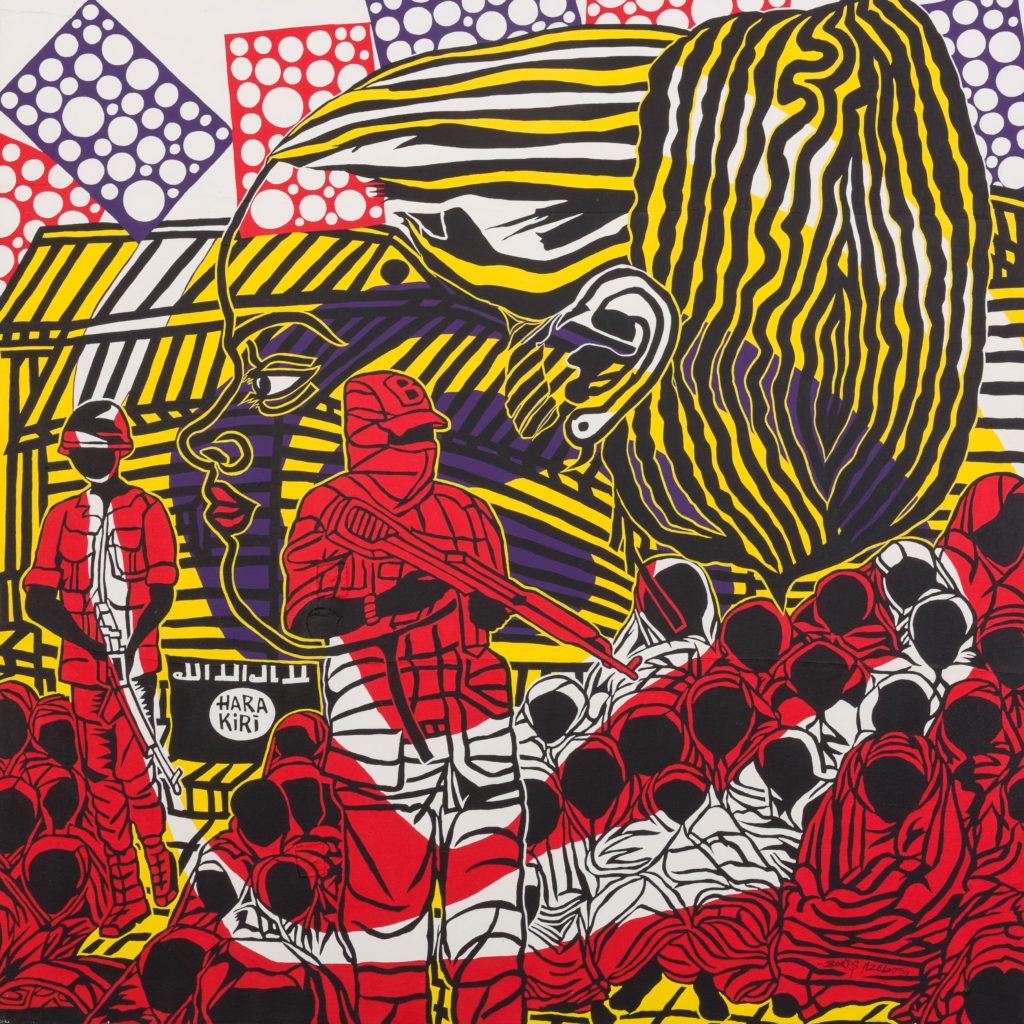
The fair's third New York edition brings artists from eight nations out of Africa's 54.

Brian Boucher

With African artists owning just 0.01 percent of the secondary market of the art trade, as the head of Sotheby’s new African art department recently pointed out, the growing 1:54 fair (one Africa, 54 countries) aims to pump up a tiny sector that has been largely neglected. Now in its third edition in the sunny, airy main hall at Brooklyn’s Pioneer Works, the fair brings artists from the African diaspora, as well as galleries from pretty much anywhere you can find African people. (Attesting to that fact, the fair also takes place in London and will inaugurate an inaugural Marrakech edition next year.)
Including just 19 galleries, the fair can be surveyed in a couple of hours, and that quick hop will bring you globally familiar practitioners like William Kentridge, as well as some who have never exhibited on these shores before, like JP Mika. The organizers mixed it up this year, with half of the galleries presented only now, in the third New York edition of the fair.
Here are the artists who caught our eye in a two-hour visit.
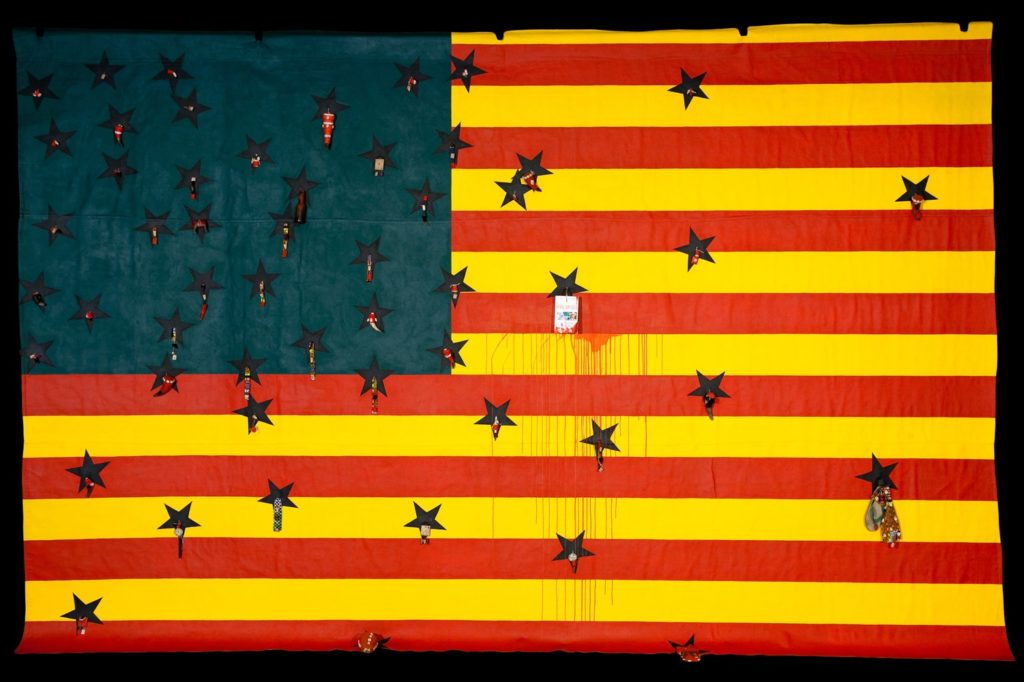
Nu Barreto, Desunited States of Africa (2010). Courtesy (S)itor.
Nu Barreto at (Sitor)
If you were looking for a work that could be emblematic of the fair overall, few would be more appropriate than Nu Barreto’s enormous assemblage, an American flag in the pan-African color scheme—red, yellow, black, and green—with gold and yellow standing, in the artist’s accounting, for the despair and bloodshed of war and colonialism. At the center of the work, piercing its heart, is a book, Françafrique, about French colonialism and its continuing baleful aftereffects. Desunited States of Africa (D.S.A.) (2010), measuring some 20 feet across, aims to take on the pain of the entire continent. It’s the artist’s first time showing on these shores, and the work is on offer at $50,000.
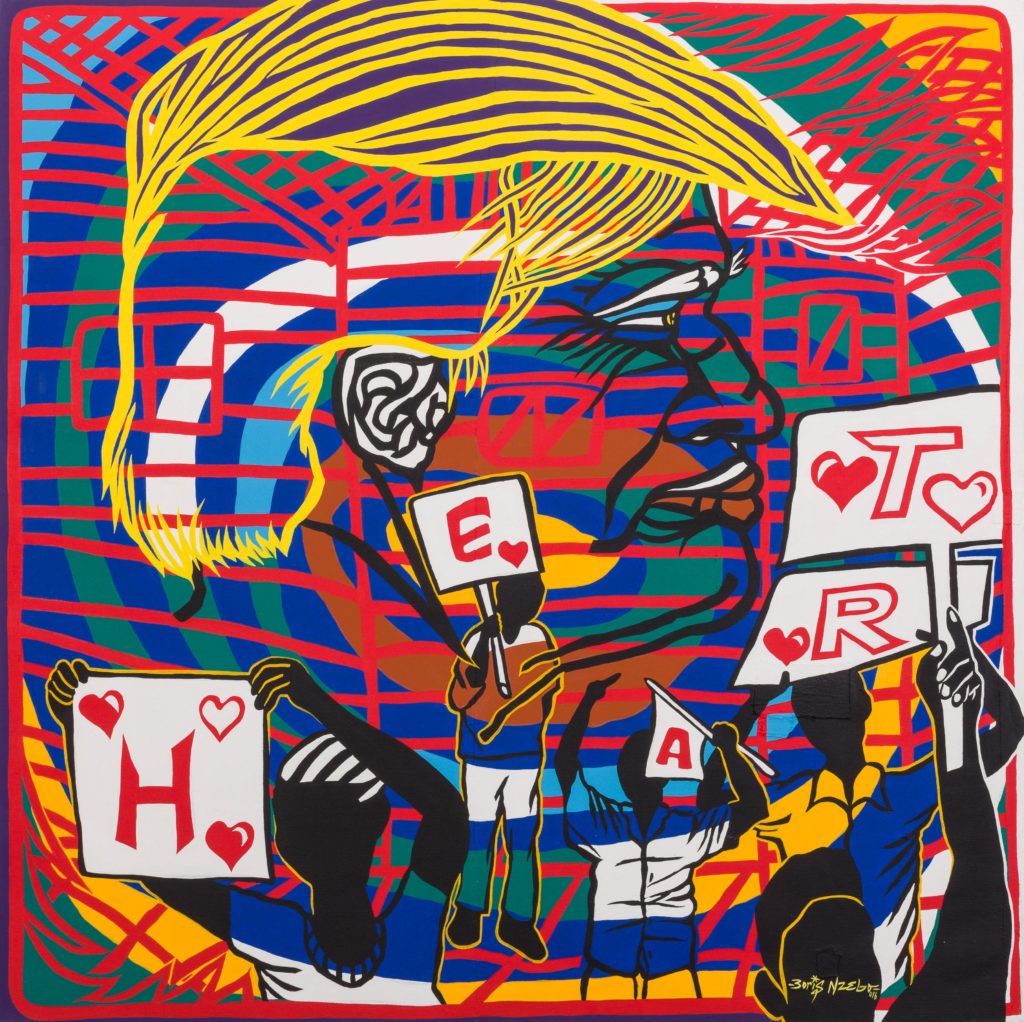
Boris Nzebo, The Heart of Man (2016). Courtesy Jack Bell Gallery.
Boris Nzebo at Jack Bell
Even at a fair emphasizing another continent, the distinct coif and frown of the American President are inescapable, in the form of a painting by Boris Nzebo titled The Heart of Man, on view at London’s Jack Bell Gallery. Tiny figures hold up cards bearing the letters of the word heart. Are they urging America’s chief officer to show some heart, or do they see him as exemplifying the heart of man?
Other Nzebo canvases engage grim subjects like the Boko Haram terrorist group, but it comes all in a brightly colored, Pop style, owing to Nzebo’s beginnings as a sign painter for barbershops in the crowded city of Douala, where he lives. His works come as cheap as $10,000 to as much as about $52,000.
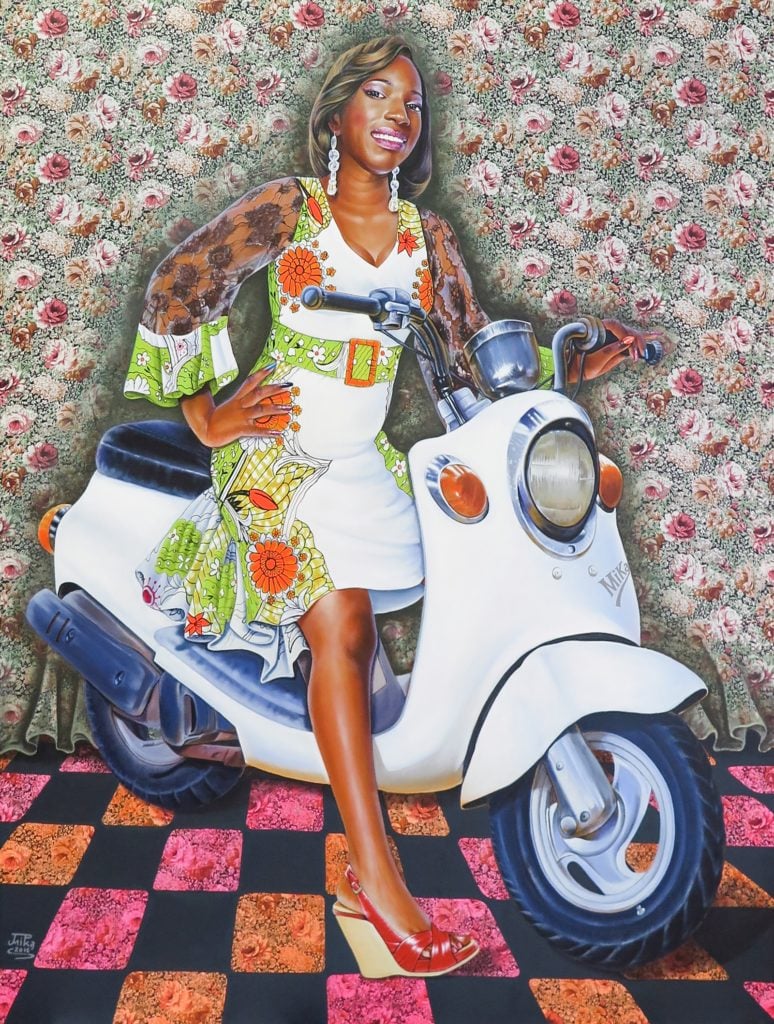
JP Mika, Beauté Scooter (2016). Courtesy Magnin-A.
JP Mika at Magnin-A Gallery
Inspired by the iconic photos of the Malian photographer Malick Sidibé, 36-year-old painter JP Mika creates vivacious portraits of his peers in Kinshasa. He paints them on floral fabrics rather than blank canvases, toying with foreground and background, in works that are reminiscent of Kehinde Wiley but have a flavor all their own. His stylish figures engage the viewer eye-to-eye and in beaming color. A student of Chéri Samba, the artist saw one of his paintings splashed on the cover of the exhibition catalogue for the show “Beauté Congo 1926–2015” at Paris’s Fondation Cartier but has had no US exposure before this. The works range in price from about $20,000 to about $33,000.
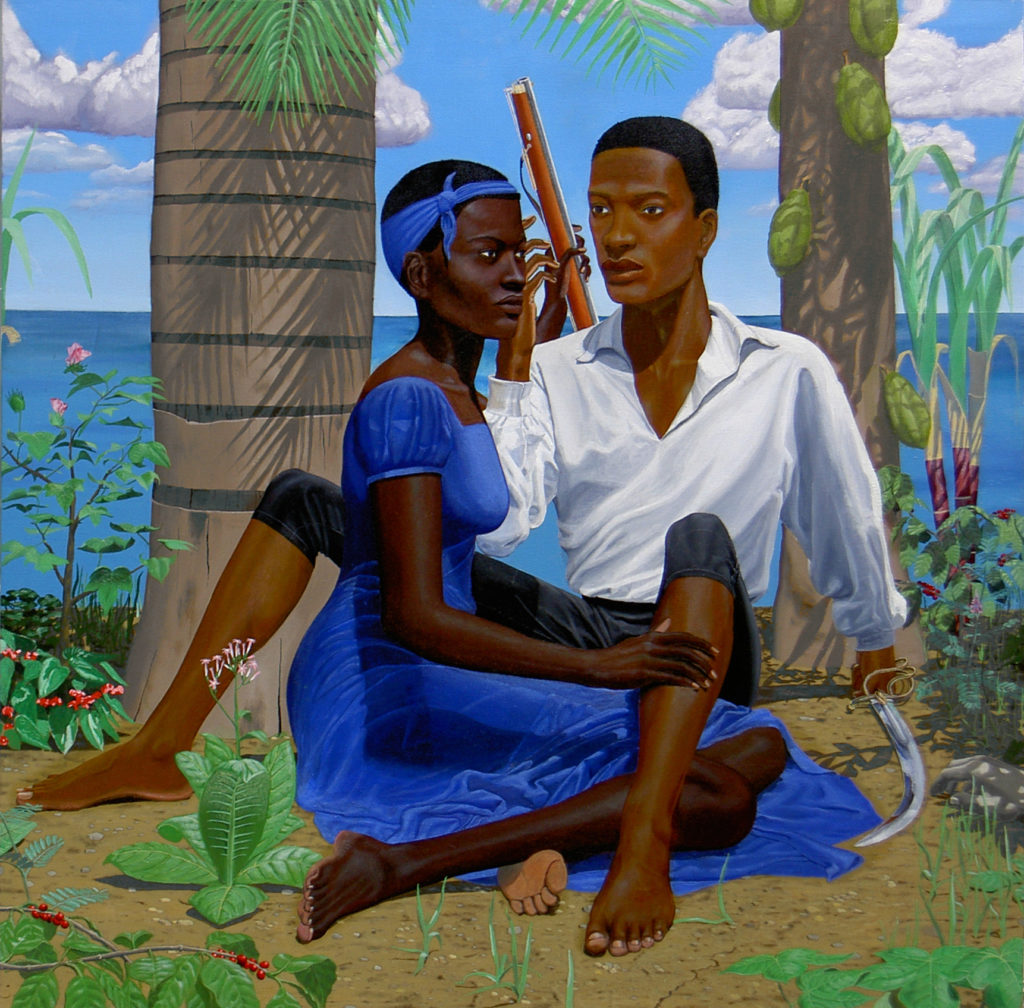
Kimathi Donkor, Charles and Sanité Bélair (2004). Courtesy Ed Cross Fine Art.
Kimathi Donkor at Ed Cross, London
Paying tribute to a pair of anti-slavery freedom fighters in the Haitian Revolution, Charles and Sanité Bélair (2004) relies on a classical pyramidal composition to gravitas to Charles and Sanité Bélair, two prominent figures in the Haitian Revolution. While they are presented as a loving couple, they’re also both subtly armed, Cross pointed out to me. Many of Donkor’s canvases echo Western figures, such as the Pietá or Sargeant’s Madame X, appropriating Western trademarks to tell stories of subjects coming from as far back as the Ashanti Empire or as close as modern-day police brutality. They will run you from $7,750 to about $25,000.
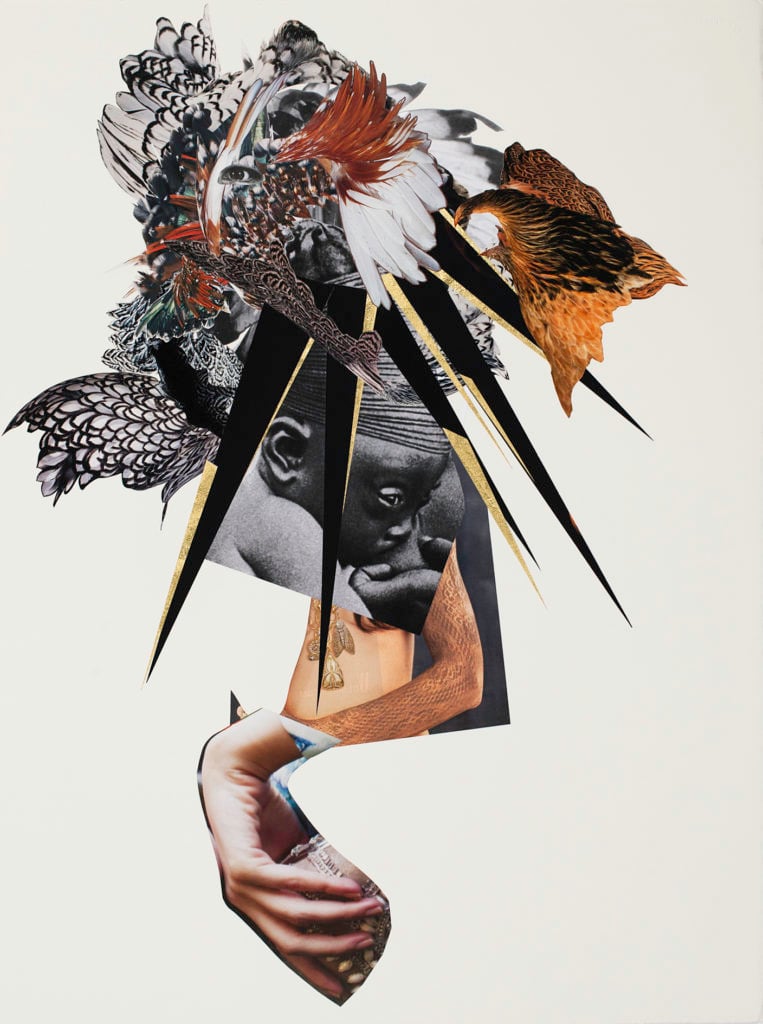
Marcia Kure, Of Saints and Vagabonds (2016). Courtesy of Officine Dell’ Immagine.
Marcia Kure at Officine dell’Imagine, Milan
The three collages on view here bring together parts of human and animal bodies, suggesting with formal grace that humankind is not such a different beast than the creatures we cultivate and confine. Their feathers, hides, and bones are not so distinct from our hair, skin, and skeletons. Born in Nigeria and now living in Princeton, New Jersey, Kure creates images that could also be read to symbolize, to put it diplomatically, the cultural blurring that may come with colonization. They bear a price tag of $11,000.
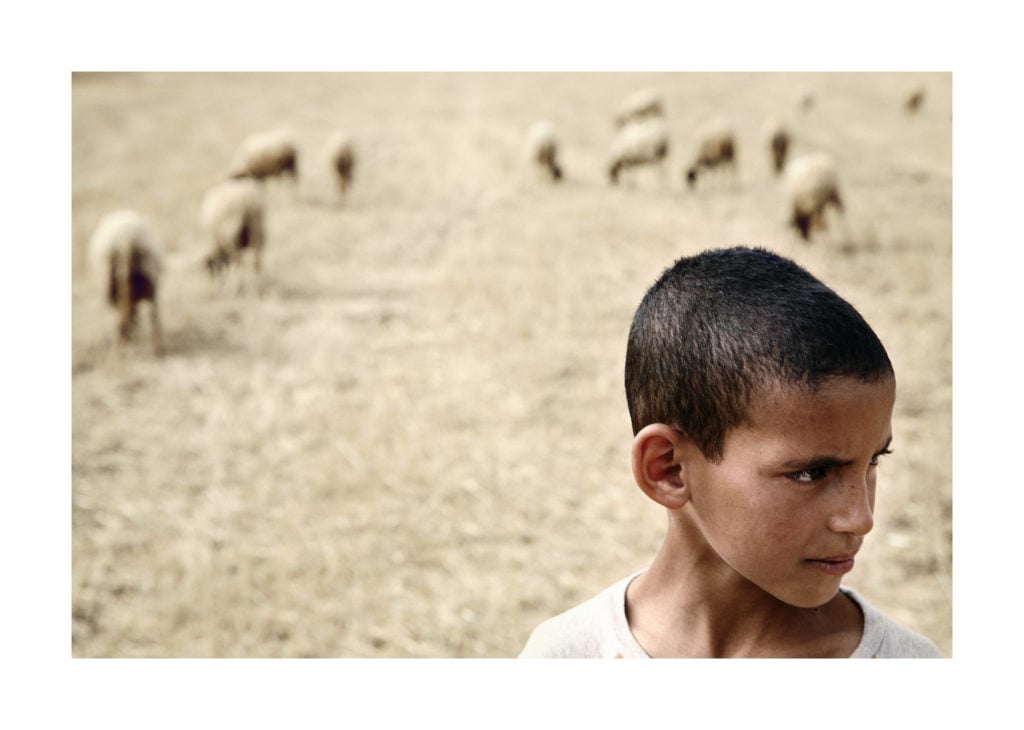
Leila Alaoui, No Pasara (2008). Courtesy of Voice Gallery.
Leila Alaoui at VOICE Gallery
Killed in a terrorist attack in 2016 in Burkina Faso, French-Moroccan photographer Leila Alaoui made migration, one of the key subjects of our era, the topic of much of her work. The photos here, recently on view at the Musée des Beaux-Arts in Montreal, Canada, are called No pasaran (“they shall not pass”). Focusing on people she got to know in northern Morocco, they resulted from a singular commitment: each is based on a week spent with its subject. Prices range from about $16,000 to about $24,000.
1:54 takes place at Pioneer Works, 159 Pioneer Street, Brooklyn, from May 5–7.